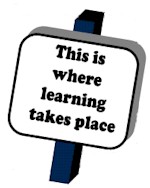November 2002 Issue
![]()
Playing the “Game” of Test
By Dennis Congos
Email: dcongos@mail.ucf.edu

Human beings have the amazing ability to become better at that which they
practice. If students practice not doing algebra problems for example, they
become better at not doing algebra problems. If students practice not looking at
questions and recalling answers from memory, they become better at not recalling
answers from memory when they look at questions. BUT, this is how the “game” of
test is played: students look at questions or problems and are expected to be
skilled at recalling correct answers or solutions from memory.
Many students have trouble doing well on tests because of a flaw in preparation.
To prepare for a test, many students read, reread, highlight, and reread, and
reread again. This method is the most time consuming, ineffective, boring way to
learn. It is also dangerous because it is not until a test is returned that
students discover if they have learned the material or not. Moreover, students
are practicing reread-ing but that is not what they must do to earn a grade when
they play the “game” of test.
To get the most out of study time, student should practice the very “game” they
have to play when taking a test. If an instructor graded students on the ability
to read and reread or highlight and re-read, many more students would be on the
Dean’s list. A better test preparation technique is to set up notes so that
students practice looking at questions and recalling answers from memory or
looking at problems and recall solutions from memory. This is the “game” that
must be played in order to do well on tests.
One version of the rules for how to play the “game” of test is presented below.
- Purchase notecards - for recording main ideas and details or problems and solutions. The size may be 3 x 5, 4 x 6, or 5 x 8 inches depending on the amount of material to be recorded, handwriting size, and if memory boosters of drawings, pictures, diagrams, charts, or tables are included.
- Turn main points from lectures and textbooks into questions. Place a question on one side of a note-card and its answer on the other. The nature and format of a question is determined by the kind of details expected to be learned (steps, stages, characteristics, procedures, causes, effects, etc.). With math or chemistry problems, put a problem on one side and the solution, step-by-step, on the other.
- Recite questions and answers. This promotes faster learning and more accurate recall and reveals what has and has not been learned before an exam is taken when something can still be done about it. The more often notecards are recited and reviewed, the more likely information is to move from short-term memory toward long-term memory. Unless recitation of material to be learned is done repeatedly and regularly, it is normal to forget material on exams.
How to set up notecards
| Question on front | Answer on back |
 |
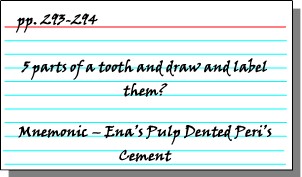 |
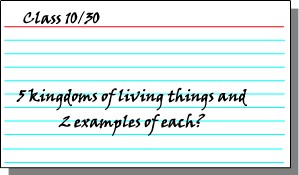 |
 |
 |
 |
How to recite notecards properly
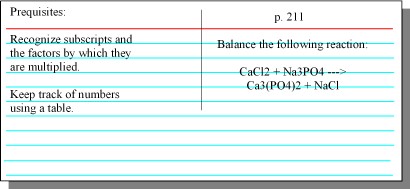 |
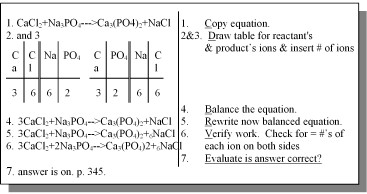 |
| Step 1. Read a question aloud from or look at a problem from the notecard. | |
| Step 2. Then without looking, recite an answer aloud as if lecturing a class. Those who have discovered that writing answers enhances learning and recall are encouraged to do so. If there are prob-lems and solutions on notecards, write out a solution on scrap paper from memory. | |
| Step 3. Turn the notecard over & check for completeness & accuracy of the answer or solution. | |
| Step 4. If the answer was complete and accurate, place the notecard in the “I know this” pile and move on to the next notecard. |
|
| Step 6. Review the “I don’t know this pile” once every 2 to 3 days to promote learning. Review the “I know this” 1 or 2 times per week to prevent forgetting. |
As the number of times increases that a student reviews and recites notecards,
more and more of the cards will transfer to the “I know this” pipe and progress
in learning becomes visible. In this manner, students discover what has been
learned and what has not yet been learned before a test is taken when something
can still do something about it. Self-testing has students practicing the skills
needed to succeed at the “game” of test.
Author’s information:
Dennis Congos
Certified Supplemental Instruction Trainer and SI Coordinator
Student Academic Resource & University Testing Center
POB 163115
113 Phillips Hall
University of Central Florida
Orlando, FL 32816-3115
407-823-5130
Email: dcongos@mail.ucf.edu
*~*~*~*~*~*~*~*~*
Questions or comments? Discuss this article with the author or with other readers by clicking here.
*~*~*~*~*~*~*~*~*

